Just a short drive beyond Wailea’s plush resorts lies one of the best beaches on Maui: Poʻolenalena (pronounced poe-oh-LEH-nah-LEH-nah), also known as Chang’s Beach.
Hidden behind a tangle of kiawe trees, Poʻolenalena was relatively unknown among visitors for years. But the secret is out, and today, this long sandy beach is a popular hangout for locals and visitors alike.

Poʻolenalena Beach boasts over 2,000 feet of soft, caramel-colored sand and a semi-shaded, (mostly) undeveloped shoreline. Bookended by lava rock points, the beach offers excellent snorkeling opportunities.
Come sunset time, Poʻolenalena becomes one of the most popular wedding beaches in South Maui. If you visit around sunset, you’ll likely see at least one couple (or sometimes three or four) saying their “I do’s.”
Curious about what else Poʻolenalena has in store? Here’s a complete beach breakdown – from accessibility to hazards to the best places to snorkel.

Location and Accessibility
Poʻolenalena is located just off Makena Alanui Drive – although it’s mostly hidden from the road by kiawe trees. There is a blink-and-you’ll-miss-it gravel parking lot about a mile past the Fairmont Kea Lani on the ocean side of the road. The parking lot can hold at least a few dozen cars.
The beach is just steps from the parking lot – no long walk required. However, it is not ADA-accessible. There are no paved trails, only sand and gravel.
Amenities
Despite being a county beach park, Poʻolenalena has virtually no amenities – only a parking lot and a portable toilet.
There are no picnic tables, lifeguards, or freshwater showers. If you plan on visiting Poʻolenalena, we recommend bringing a jug of water to rinse off with.
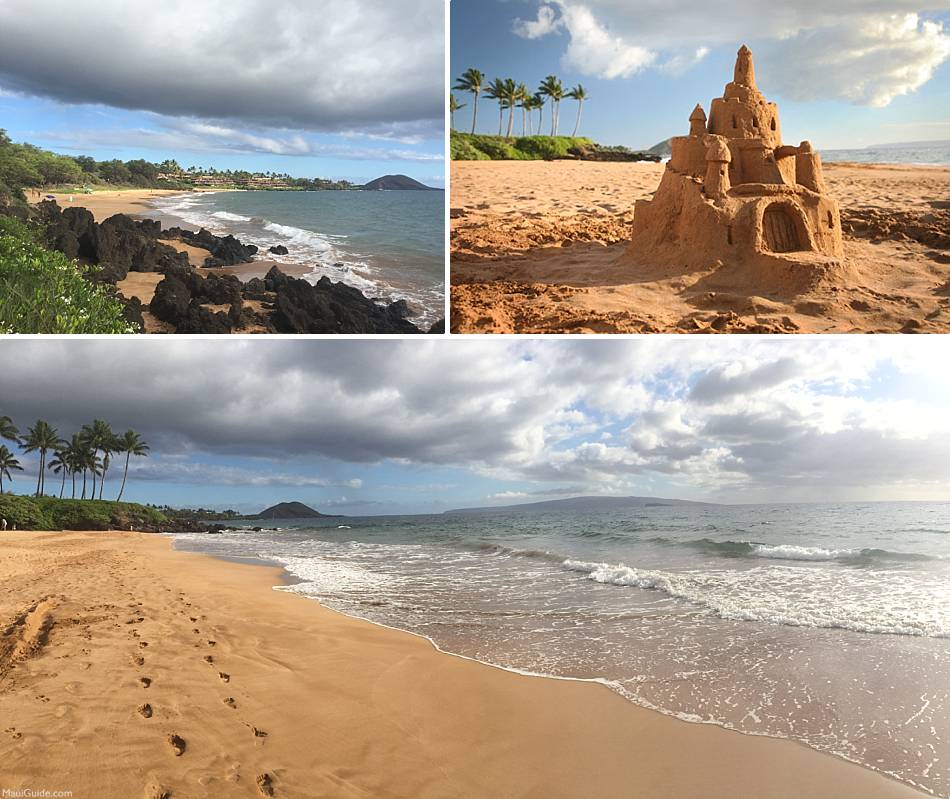
Beach Features
Although Poʻolenalena lacks amenities, there is a lot to love about this beach.
- Shade. There are plenty of shaded areas to relax under, primarily under the kiawe trees fronting the parking lot. Poʻolenalena is also long and relatively wide (when compared to other beaches on Maui), so even on the busiest days, you can easily find an empty patch of sand to claim.
- Sections. Poʻolenalena has three sections: south end, middle, and north end. What looks like the end of the beach by the parking lot is actually a rocky outcropping that divides the beach in two. The south end fronts Makena Surf Condos. The middle fronts the parking lot, while the north end is hidden just over the rocky outcropping to the right of the parking lot. The north end is almost completely hidden from the middle and south end, so it is usually less crowded.
- Swimming. On calm days, Poʻolenalena boasts great swimming conditions, especially in the middle of the beach – thanks to a slopey-sandy entry and rock and reef-free shoreline.
- Boogie boarding. Poʻolenalena is a great place to boogie board when the waves are up. But please know your limits and only attempt this if you’re experienced. The swells in Hawaii are unpredictable, and the shorebreak can toss you here.
- Views. This southwest-facing beach boasts excellent views of Molokini, Kahoolawe, Pu‘u Olai in Makena, and the setting sun.
- Snorkeling. Poʻolenalena has some of the best snorkeling in South Maui, but it’s recommended for intermediate to advanced snorkelers only.
- Fishing. Poʻolenalena is a popular fishing spot among locals. If you see poles set up in the sand, be mindful and avoid swimming near the lines.
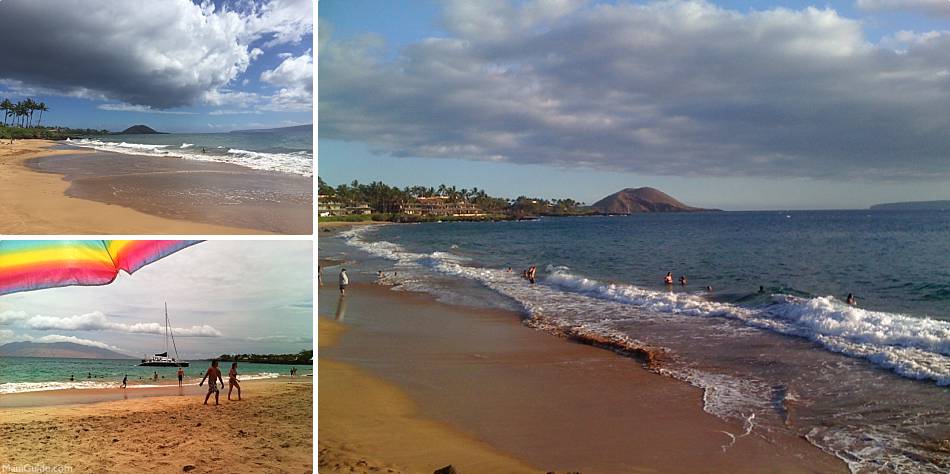
More Snorkeling Info…
SOUTH END
The best snorkeling is found off Poʻolenalena’s south point, directly fronting Makena Surf Condos.
To get to the best part of the reef, you have to swim about 450 feet around the point – which is why we don’t recommend this spot for beginners. Snorkel tours often frequent this area, too, so you have to be very aware of your surroundings and cautious of incoming boats.
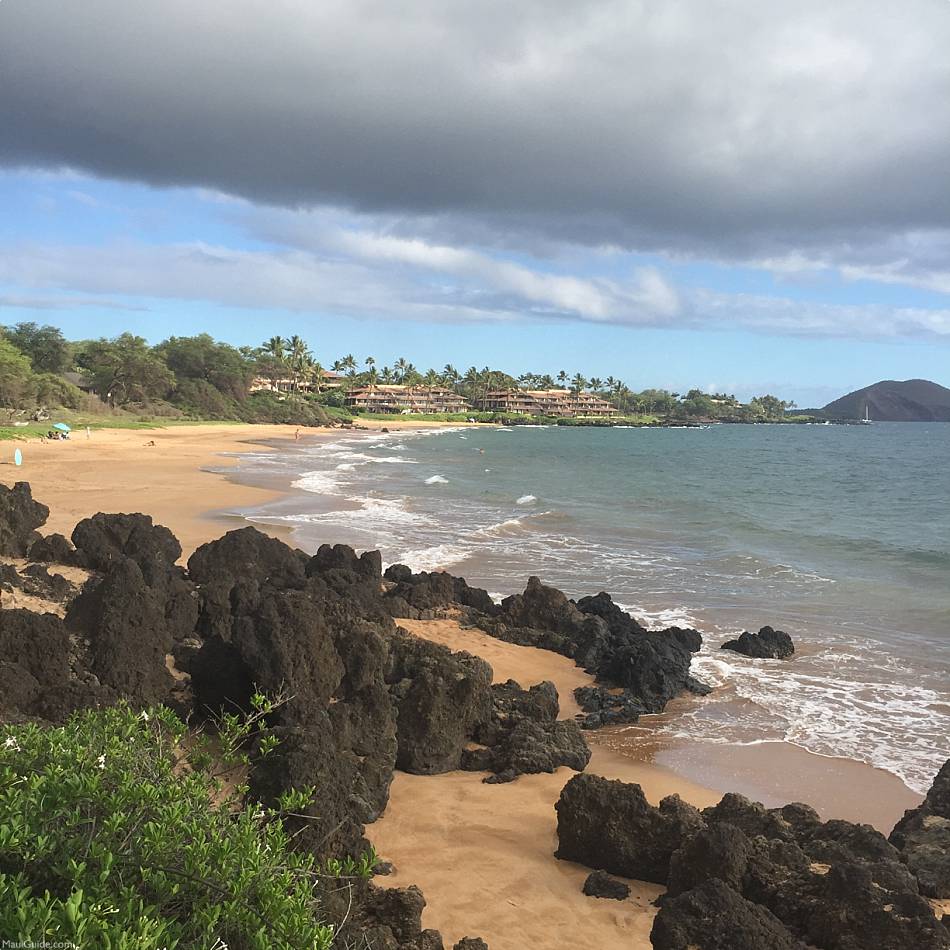
Snorkelers that make it here are rewarded with excellent visibility, a flourishing coral reef, and probable sea turtle sightings.
The depth ranges from about five to 25 feet here. Watch out for surges if you’re snorkeling in shallow sections.
MIDDLE SECTION
The rocky outcropping in the middle of the beach (near the parking lot) has some decent snorkeling, too. The reef looks small, but it actually extends a few hundred feet. The corals are healthy, and you can usually spot sea turtles, but the visibility isn’t as good as at the south point.
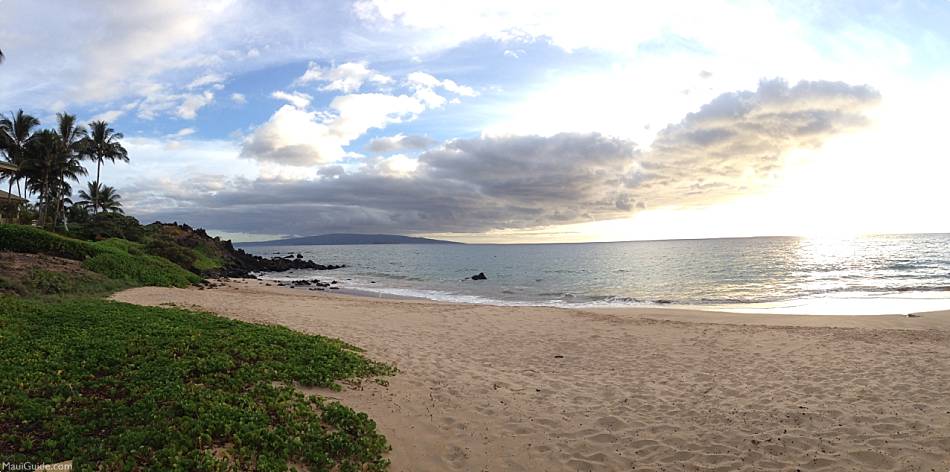
POTENTIAL HAZARDS
Like any beach on Maui, Poʻolenalena comes with its share of potential hazards. Here’s what to watch out for.
- Kiawe thorns. Yes, the kiawe trees provide much-needed shade. But they also have large thorns that are no fun to step on. If you’re barefoot near the trees at Poʻolenalena, watch out for thorns, and make sure your keiki keep their shoes on under the trees.
- Man-o-war. Man-o-war can be an occasional issue at Poʻolenalena. Man-o-war sail on the wind, so if the wind is blowing onshore (or towards land), they might show up. If you spot them washed up on the beach, that’s a telltale sign they’re in the water, too. Be careful because they can still sting you on the beach.
The good news is, onshore winds don’t happen very often – and they don’t make for enjoyable swimming or snorkeling conditions, so it’s unlikely you’ll be in the water anyway. But you’ll want to watch for man-o-war for a day or two following strong onshores.
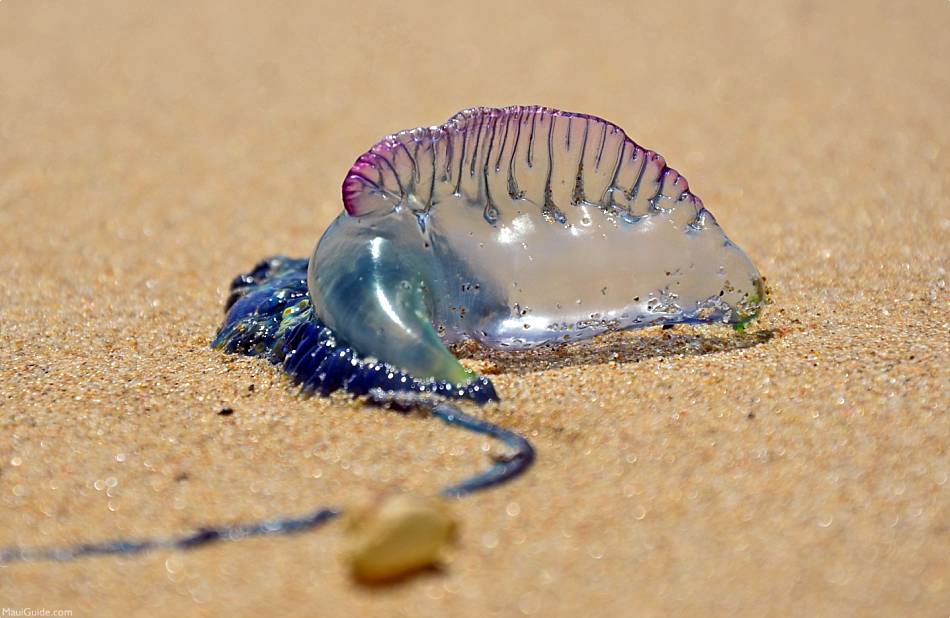
- Swells, current, and shorebreak. These are probably the biggest hazards at Poʻolenalena Beach. Poʻolenalena is exposed to the open ocean with no outer reefs to protect it from swells. The currents near the points can become strong even when swells are small.
South swells in the summertime and west swells in the wintertime can create pounding shorebreak at Poʻolenalena. It’s always recommended to check the surf report and observe conditions for a few minutes before entering the water. Some great resources for swell forecasts on Maui include the Snorkel Report, Surfline, and Surf News Network.
- Wind. While wind isn’t much of a hazard (unless it sends a beach umbrella flying), it can make beachgoing at Poʻolenalena unpleasant. Tradewinds usually kick up in the afternoon, blasting sand on beachgoers and destroying snorkeling conditions. Poʻolenalena is best enjoyed in the mornings before the tradewinds come up.
Weddings
Interested in getting married on Poʻolenalena Beach? Congratulations! Poʻolenalena is an excellent place for a small, intimate ceremony. Here’s a few things you should know about getting married at Poʻolenalena:
- Popularity. Poʻolenalena is hands-down one of the most popular Maui beaches for weddings. Be ready to see other couples tying the knot at the same time.
- Permits. You must obtain a permit for a Maui beach wedding. There’s no getting around this. Fortunately, the permit process is straightforward, and there are countless Maui wedding professionals to guide you through this process.
- Timing. Sunset is the most popular time for Poʻolenalena weddings. One word: views. Also, most of the beachgoers are gone around this time.
- Accessories, chairs, and decor. Sorry, but no chairs, arches, or accessories are allowed on the beach for wedding ceremonies. If this is a dealbreaker, consider a private beachside venue for your wedding. Most beach wedding couples opt for small, intimate ceremonies with a reception hosted elsewhere.
- Accommodations. There are plenty of accommodations near Poʻolenalena Beach. Makena Surf and Fairmont Kea Lani are the closest, but there are a slew of luxury hotels and affordable condos down the road in Wailea and Kihei.
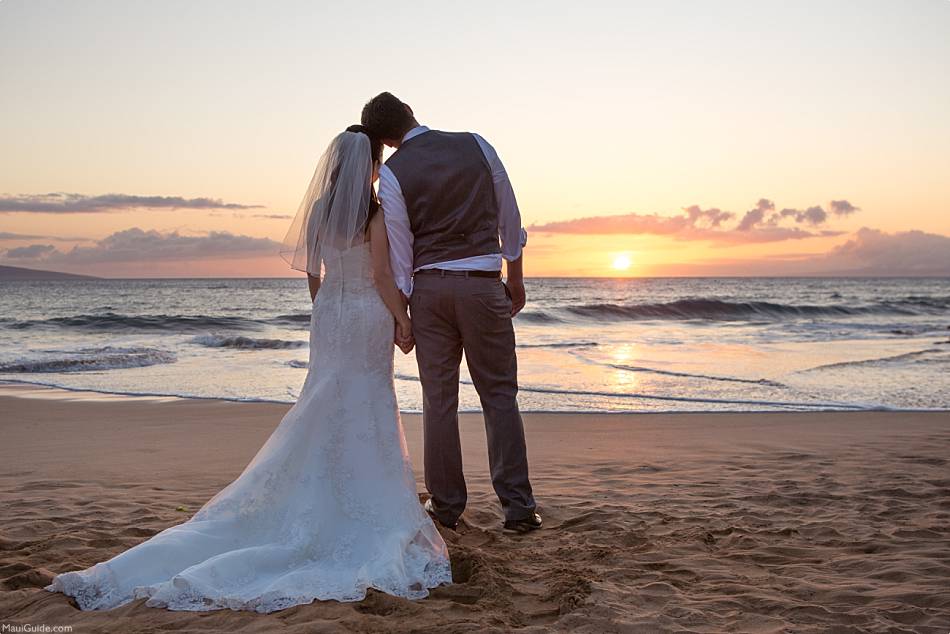
We hope you enjoy your visit to Poʻolenalena Beach!

We’re a small group of full-time Maui residents that LOVE exploring and writing about what we think is the best place on Earth: The Island of Maui, Hawaii! Expect many more articles, reviews, photos and videos of Maui and all of the Hawaiian Islands. ALOHA!

Leave a Reply